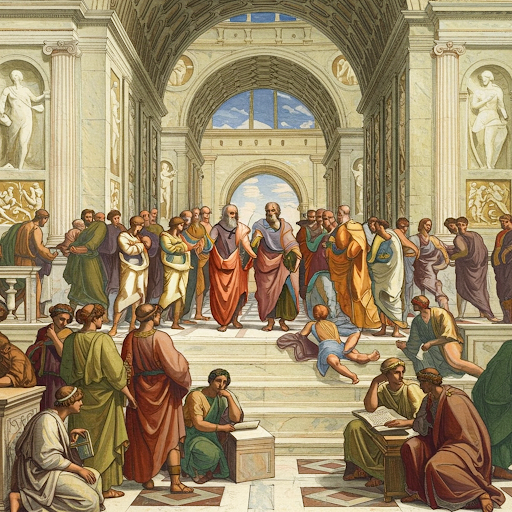Introduction
Plato’s Academy, founded in the early 4th century BCE, stands as one of the most influential institutions in the history of Western education. As the first known institution of higher learning, the Academy was not merely a school but a center for philosophical, mathematical, and scientific inquiry. Its impact shaped intellectual traditions for centuries, influencing scholars from Aristotle to Renaissance thinkers.
The Foundation of the Academy
Plato established the Academy around 387 BCE in Athens, near a sacred grove dedicated to the hero Academus. Unlike contemporary schools, which often focused on rhetoric and practical skills, the Academy was devoted to the pursuit of truth and wisdom. Plato sought to create an environment where students engaged in rigorous dialogue, questioning, and logical reasoning.
Curriculum and Teaching Methods
The Academy’s curriculum was diverse and interdisciplinary, covering subjects such as:
Philosophy: Heavily influenced by Socratic dialogue, students engaged in dialectical discussions to explore concepts of justice, virtue, and the ideal state.
Mathematics and Geometry: Following the Pythagorean tradition, mathematics was regarded as essential to understanding the universe. The phrase "Let no one ignorant of geometry enter here" is often associated with the Academy.
Astronomy and Natural Sciences: Students studied celestial movements and the nature of reality, influenced by both Pythagorean and Presocratic thought.
Politics and Ethics: As outlined in The Republic, Plato envisioned philosopher-kings as the ideal rulers, and political theory was a significant focus of study.
Unlike modern universities, there was no formal structure of lectures or degrees. Instead, students engaged in continuous discussions, guided by mentors, including Plato himself. The Socratic method of questioning was a fundamental teaching technique, fostering deep intellectual engagement.
Notable Scholars and Contributions
The Academy produced some of the greatest minds of antiquity, with its most famous student being Aristotle, who later founded his own school, the Lyceum. Other influential figures associated with the Academy include Speusippus, Xenocrates, and later Neoplatonist thinkers like Plotinus.
The Academy contributed significantly to:
The development of Platonism, a philosophical system that influenced later Christian, Islamic, and Renaissance thought.
The advancement of logic and metaphysics, particularly through dialogues such as The Republic, The Phaedo, and The Symposium.
The early foundations of scientific and mathematical inquiry, influencing scholars like Euclid and Ptolemy.
The Academy's Decline and Legacy
The Academy persisted for centuries, evolving through various philosophical phases, including the Middle and Neoplatonic periods. It was eventually closed by the Byzantine Emperor Justinian I in 529 CE, marking the end of a remarkable intellectual era. However, its legacy endured, profoundly shaping Western thought through the works of its students and their intellectual descendants.
Conclusion
Plato’s Academy was more than a school; it was a revolutionary institution that laid the groundwork for modern philosophy, mathematics, and science. By fostering critical thinking and intellectual exploration, it became a model for future educational institutions, ensuring that its influence persists even in the contemporary academic world.









